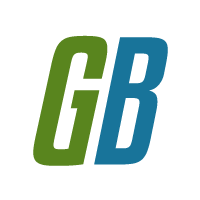Thales Case Studies
Aurora
The concept
Thales’ hardware offerings were often limited by strict FAA regulations on weight, running temperature, and privacy, and as such, we were often building on 10-12 year-old technology while competing with smartphones, tablets, and other passenger tech. Clients often voiced concern over this, so it was my job as a UX designer to come up with creative and innovative solutions to even the playing field. One such idea, Aurora, was a suite of augmented reality programs driven by our newest hardware’s camera and gyroscope - firsts for Thales tech - that each showcased a different way of engaging with AR. I presented this during an executive-led Shark Tank-style competition, which allowed each team (in my case, myself) only 24 hours to put together and pitch a new product or service.
Let’s play
Above is the full carousel, and the basic IA structure of this app, which contained 5 different modes a user could explore using the handheld TPMU device’s camera and gyroscope. The modes were as follows:
Looking Glass
“Looking Glass” allowed the user to select from a variety of types of content and explore another world through the lens of the camera. By moving the device around from their seat, they would be able to peer into another world and interact with each object to learn more about it.
In this example, I used the solar system as an example, pulling the user into our solar system to see the planets in orbit. Clicking on a planet would bring up an info screen where the user could learn more about each planet.
Light Speed
Light Speed allowed users to build their very own aircraft, and then fly it around using the camera and gyroscope on the device. The craft could explore the cabin, possibly collecting power-ups, or be used in a game to avoid objects, etc. Airlines could brand these craft with their own livery, or offer various options unique to that airline. Users could then share their craft and take it with them anytime they flew that airline through a simple QR code.
Storyteller
Storyteller prompted users to create their own short story using simple choices. In this instance, they would choose a hero, a villain, and a location, and the story would play out on their own tray table!
Time Traveler
Time Traveler was an excellent opportunity for airlines to showcase the evolution of their craft and crew over time, including the history of their livery, crew uniforms, and aircraft. In this example, the users can browse through the history of American Airlines fleet, or the Bangkok Airlines crew uniforms.
Blueprint
My favorite of the apps, Blueprint doubled as both an entertainment and safety feature. With this app, the user could see their current aircraft on their tray table, with diagrams of the layout, features, or any other info the airline might be proud of showing. Users could also move the camera around the craft to see vital info overlaid onto their screen, like restrooms, exits, masks and flotation devices, and other safety info.
